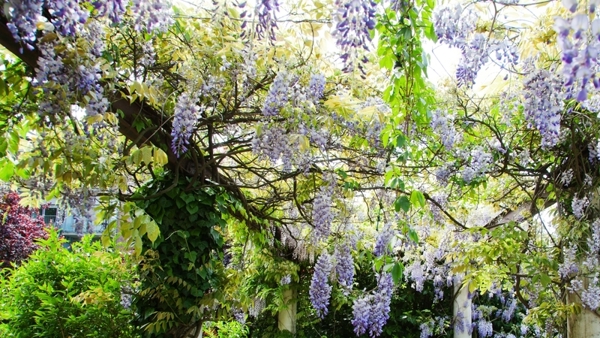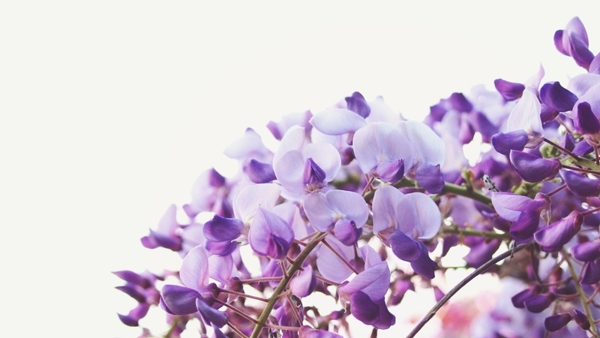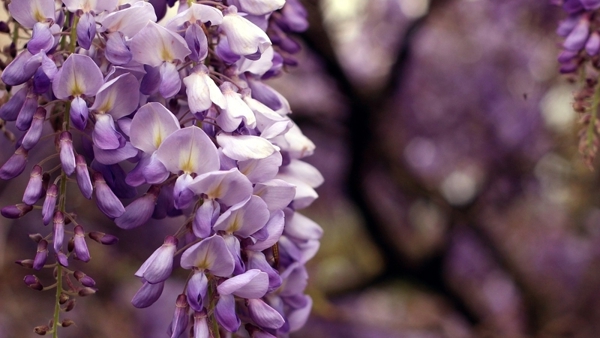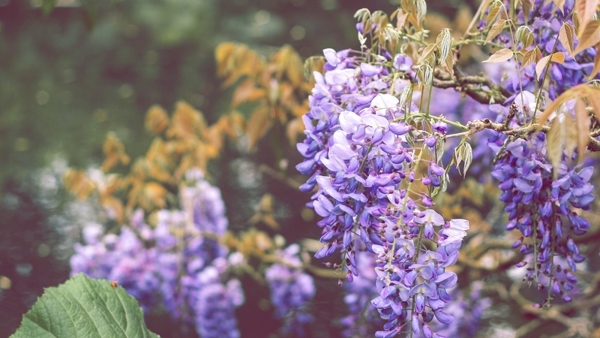Yates Account
Join now
Create a Yates account today!
Sign up to join the Yates Garden Club for monthly e-mails packed with seasonal inspiration, tips for success & exclusive promotions.
Plus if you’re a Garden Club member you can take part in the Yates Growing Community - a blog to share successes, get advice & win prizes in fun challenges along the way!

Forgot password
Enter the email address associated with your account, and we'll email you a new password.

Nothing indicates the start of Spring more than the sweet smell and cascading perennial blooms of Wisterias (Wisteria spp.). Their massive array of flowers that seem to fall from the sky are a dream for any gardener. Loved by Monet and a large part of his garden, you can grow your own wisteria in your backyard or even in a small bonsai pot if you choose.
How to grow wisteria in a garden
- Choose a well-drained spot in the garden that gets full sun to part shade.
- Enrich the soil in the planting bed with some compost and Yates Thrive Natural Blood & Bone with Seaweed before planting.
- Dig the planting hole twice as wide and to the same depth as the root-ball. Remove the plant from the container, gently tease the roots.
- Position in hole and backfill with soil, gently firming down. Form a raised or doughnut-shaped ring of soil around the outer edge of the plant's root zone. This helps keep water where it's needed. Always water in well after planting to settle the soil around the roots and keep the soil moist for several weeks while the new plant establishes.
- Mulch around the base with organic mulch like bark chips, woodchip or pea straw, keeping it away from the base of the plant.
- Feed throughout the growing and flowering season with Yates Thrive Rose & Flower Granular Plant Food. TIP: For an added boost apply Yates Thrive Roses & Flowers Liquid Plant Food.


How to grow wisteria in a pot
- Choose a pot at least 600 mm wide. Position in full sun to part shade and fill with quality potting mix, such as Yates Premium Potting Mix.
- Remove the plant from the container, gently tease the roots.
- Position in hole and backfill with potting mix, gently firming down. Water in well.
- Feed throughout the growing and flowering season with Yates Thrive Roses & Flowers Liquid Plant Food. TIP: For an added boost apply Yates Thrive Natural Fish & Seaweed+ Plant Food Concentrate.


Growing tips
- Wisterias are very fast growing climbers and require plenty of pruning to keep under control.
- Ensure that you provide the plant with plenty of support as it won’t cling to objects by itself, making sure that the support is sturdy enough to hold the plant.
- Great for the cooler regions as they love and tolerate frosts up to -15°C..
- Take care when planting out as the root system can sucker and become weedy in the garden if not controlled.
- Wisterias can also be grown and pruned as bonsai plants for the small space gardener.
- The two main species available:
- Chinese Wisteria (W. sinensis) This species is most commonly seen in the warmer temperate areas and produces a lovely array of blue flowers in early spring. Look for 'Blue Sapphire' or 'Caroline'.
- Japanese Wisteria (W. floribunda) The Japanese Wisterias love the cooler regions and perform best when they are exposed to heavy frosts. They are well known and the ones that are often pictured in Japanese gardens in the spring. They are available in an array of flower colours from pink, purple to white and produce more flowers than that of the Chinese species. Look for 'Pink Ice', 'Snow Showers', 'Lavenders Lace' or 'Eds Blue Dragon'.
A certified organic garden input boosted with NZ Seaweed to gently nourish plants, enrich the soil and encourage a strong healthy root system.
Yates Thrive Rose & Flower Granular Plant Food
Specially formulated to grow all types of flowers. With high potassium for large & abundant flowers, added calcium & iron for stronger flowers.
Yates Premium Potting Mix
A premium potting mix, ideal for all potted plants and shrubs, including ornamentals, fruit trees, vegies and herbs.
Yates Thrive Roses & Flowers Liquid Plant Food
Provides your flowers & roses with the balanced nutrients they require for healthy growth and flower production.












Share
Share this article on social media